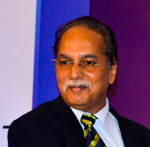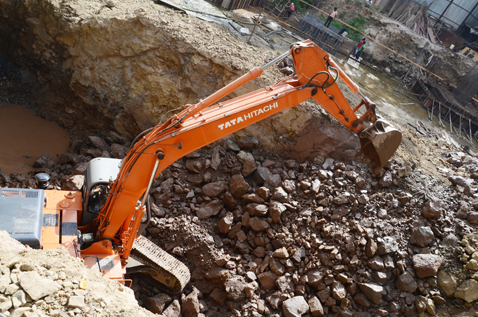
—Anand Sundaresan, Chairman, Indian Construction Equipment Manufacturers’ Association (ICEMA)
Tell us about how membership of ICEMA has grown over the years. In terms of value, what percentage of the industry can we consider to be represented by ICEMA?
ICEMA is a 65-year old organisation. Earlier it was called as Indian Earthmoving & Construction Industries Association Limited (IECIAL). In the past there were very few manufacturers of construction equipments in India and there were hardly 12 to 15 members like L&T, Greaves Cotton, Escorts, GMMCo and so on. In the early 2000 the membership increased to 22 in number.
After the liberalisation process started in India, many more overseas firms started setting up shop in India, in the form of JVs or wholly-owned subsidiaries. Slowly, all these manufacturers also started becoming members of the association. Then, we thought we should also include other stakeholders like major component manufacturers, finance companies etc as associate members. Thus, today we have 58 members in the association, where over two-third are manufacturers, covering almost 80 per cent of the members by value. Looking at the good work being done by ICEMA many more manufacturers have also shown interest in joining the association. We expect to have about 75 members by the end of this year.
What are the major issues that ICEMA is currently taking up, on behalf of the CE industry?
In the last few years, ICEMA has been representing the Indian equipment manufacturers’ concerns with respect to tax reforms, import duty concessions, budget policies, skill development, etc., with various ministries, directly and also through other industrial associations like CII. We have now reached the next level and the idea is to have close interaction with different Ministries, in representing our concerns with respect to capital goods policies, partnering with government agencies in formulating specifications, testing processes, skill development, etc., with respect to improving the construction quality, performance of equipment, improving productivity and so on.
There are various tasks which ICEMA is contemplating in the next few years. The following are to name a few:
- Submitting a draft proposal for introducing a separate regulatory framework / act for off-highway equipment, similar to CMVR.
- Setting up an independent test and certification centre for the construction equipment, in particular for off-highway equipment.
- To interact closely with the Ministry of Road Transport & Highways. Drawing out detailed specifications of the minimum standards that are necessary for the equipment of highway projects.
- To interact with the Central and State Governments with regard to specific equipment and technology for building rural roads.
- To support the Infrastructure Equipment Skill Council (IESC) to scale up skill development activities for equipment operators, mechanics, etc.
- To create visibility for ICEMA by close interaction with both Central and State Governments, by conducting regular seminars and presentations on the latest technology, on infrastructure development, rural roads, highway equipment and financing / leasing of equipment.
- To strengthen ICEMA’s interaction with international associations, with a view to share and learn the latest development worldwide.
What impact do you see of the large number of multinationals entering the industry?
You are right; many MNCs have entered India in the last decade. This is very good for the industry and for construction companies. Today, you name the leading manufacturer construction equipment manufacturer in the world and it is present in India in some form or other. Firstly, this has brought in healthy competition in the market. This has also resulted in many other advantages to the industry and the end-user. Some of them are easy availability of various types and capacities of equipment; availability of state of the art equipment; training, sharing of global best practices in construction methodology; continuous innovation; creation of many accessories and component manufacturers; and of course, huge employment generation both at the manufacturers place as well as with the end user.
When it comes to operators of construction equipment, we understand that India is facing an acute shortage? What is your view? Please discuss how ICEMA is addressing this issue.
During the last 3-4 years, ICEMA has been working very closely with the National Skill Development Corporation (NSDC) to create a skill council for imparting training to construction equipment operators and maintenance crew. This ICEMA-promoted skill council called “Infrastructure Equipment Skill Council” (IESC) is already approved by NSDC and is operative for one year. ICEMA members are actively involved in the working group of this council. In the last one year, IESC has progressed quite a bit, and many of the equipment manufacturers’ training centers are already accredited as NSDC-IESC approved training centers. This skill council is aimed to train over 2 million operators and maintenance personnel, in the next 7-8 years.
We understand that when it comes to construction equipment, the “purchase” market is far greater than the “rental” market. In developed countries, the rental business has a much greater penetration. What is your overall reaction?
It is true that currently most of the equipments are purchased by the end user. Some of the equipments are rented out. There are very few organised rental companies. Many end-users would like to lease out the equipment, like in many other countries in the world, but we have some operational issues and tax issues. Unless these are sorted out leasing of equipments will not develop.
Given that infrastructure development in India is seen reviving, how do you see prospects for Indian CE manufacturers in the years to come?
We are all hoping that infrastructure projects will revive in the near future. Currently in the road sector, we are seeing some movements. However, similar movements are not seen in the other sectors. The last four years have been very challenging for construction equipment manufacturers. The cost has been increasing, but the growth has been declining. Most of the companies are operating at between 50-70 per cent of their installed capacities. Therefore the industry can meet the demands up to twice the demand today. With regard to potential in our country, undoubtedly there is huge potential. We are all waiting for the revival.












